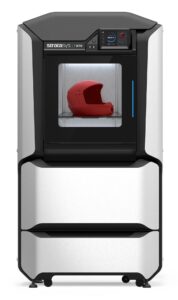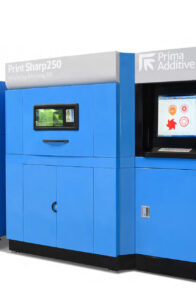After many years of experience in sheet metal working, we decided it was time to take a technological leap into a new world. 3D printing technology offers countless advantages as well as a high flexibility of realization, without the need for ad hoc equipment such as molds in the case of production by extrusion of material. These advantages have an impact both on the time of realization and on the final cost of the product, allowing to always obtain high quality, robust and reliable results.
To offer an increasingly cutting-edge service, Silap now has a Stratasys F370 3D printer suitable for rapid prototyping of components that can be made in different thermoplastic materials using Stratasys FDM technology (fused deposition modeling). This technology allows the creation of dimensionally stable pieces, with the highest degree of precision and repeatability compared to any other 3D printing technology (For more information visit the dedicated page).
It also has innovative features such as an integrated webcam in the working chamber that allows the entire printing process to be monitored remotely, as well as multiple material loading slots with automatic changeover when a reel is terminated. These aids allow the operator to optimize the printing process and make it more efficient.
For the construction of the parts, a support material is required, which for most of the material that can be processed is soluble in a special washing tank, for others it is necessary to remove it manually at the end of the process.
Here are the characteristics of the printer at our disposal:
 |
|
 |
The new frontier of additive manufacturing is without a doubt 3D printing of metal, so we chose the PrintSharp 250 model from Prima Additive, which works using PBF (power bed fusion) technology, which requires the machine to spread a layer of sintered metal powder that is then melted according to the desired shape, going to create several overlapping layers until it reaches the height of the component to be made. This machine is able to produce components which until now were unthinkable with traditional machining methods, while maintaining excellent strength and mechanical characteristics comparable or even superior to components made from solid metal.
|
Below are some examples that can be realized with the machines described above:
For more information, we are now available to answer all your questions/requests.